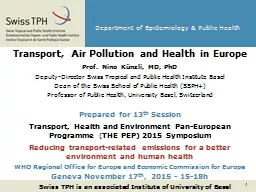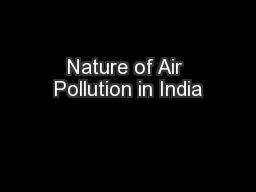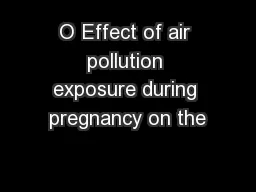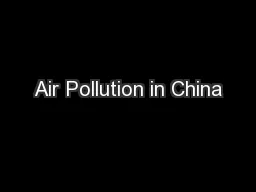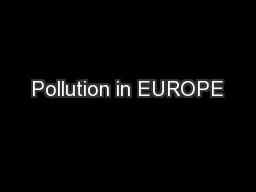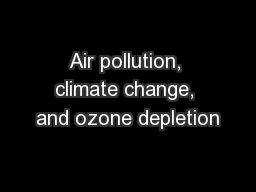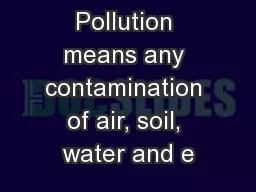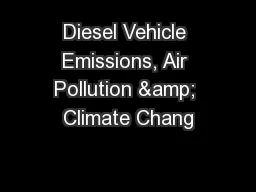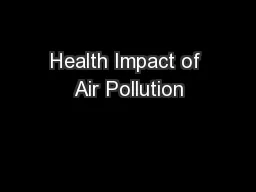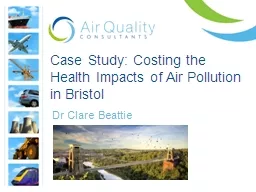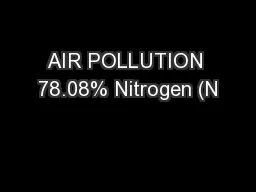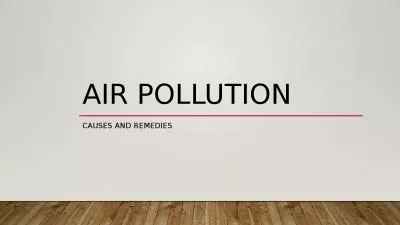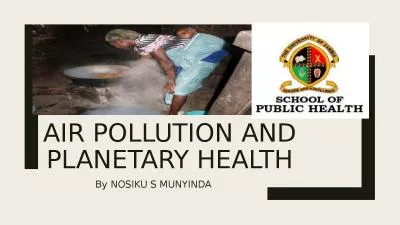PPT-1 Präsentationstitel Transport, Air Pollution and Health in Europe
Author : messide | Published Date : 2020-06-23
Prof Nino Künzli MD PhD Deputy Director Swiss Tropical and Public Health Institute Basel Dean of the Swiss School of Public Health SSPH Professor
Presentation Embed Code
Download Presentation
Download Presentation The PPT/PDF document "1 Präsentationstitel Transport, Air Pol..." is the property of its rightful owner. Permission is granted to download and print the materials on this website for personal, non-commercial use only, and to display it on your personal computer provided you do not modify the materials and that you retain all copyright notices contained in the materials. By downloading content from our website, you accept the terms of this agreement.
1 Präsentationstitel Transport, Air Pollution and Health in Europe: Transcript
Download Rules Of Document
"1 Präsentationstitel Transport, Air Pollution and Health in Europe"The content belongs to its owner. You may download and print it for personal use, without modification, and keep all copyright notices. By downloading, you agree to these terms.
Related Documents

